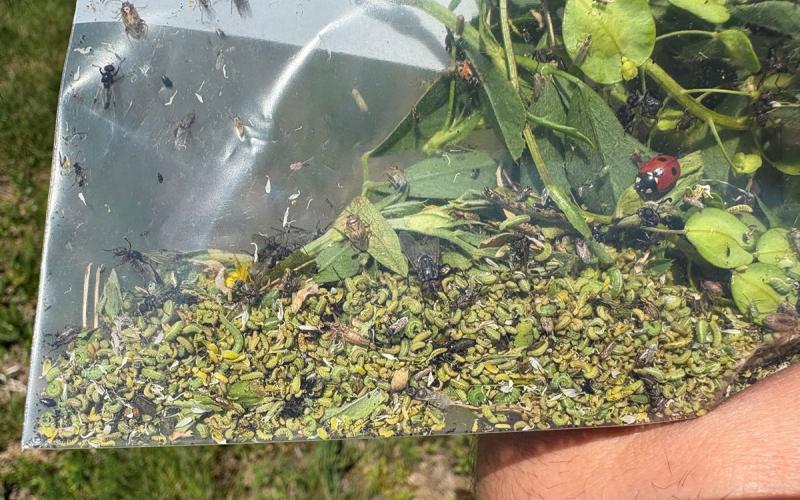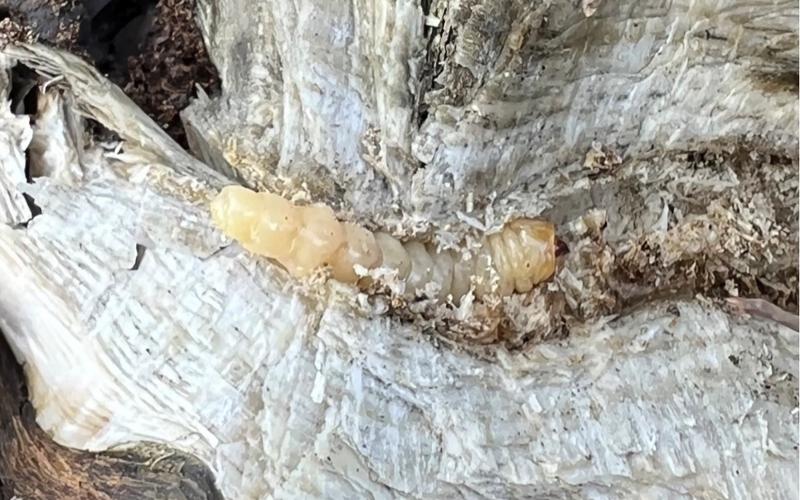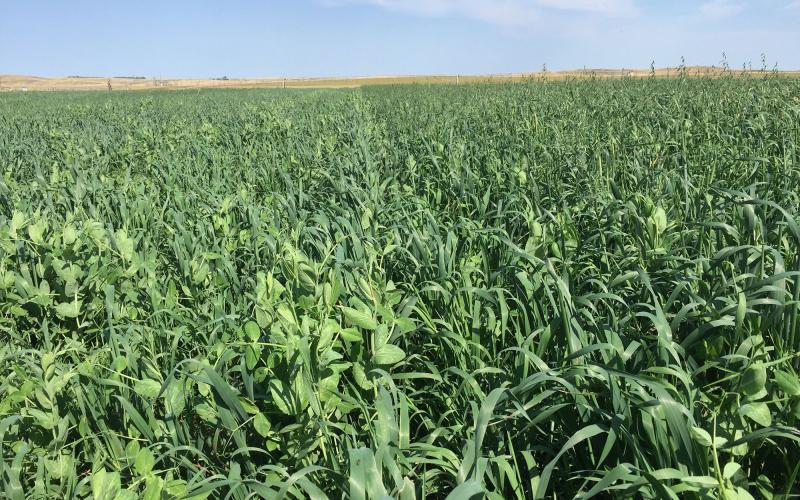It is finally warming up across much of South Dakota and that means the degree days are beginning to accumulate more rapidly. Alfalfa weevil activity is likely in areas around Rapid City, Hot Springs, Cottonwood, Mission, Pierre, Winner and Vermillion. In the area around Hot Springs, it is possible that larvae activity and early feeding may be observed in alfalfa fields. By next week, activity will also be likely in areas around Buffalo, Newell, Lemmon, Mitchell and Tyndall. The daily high temperatures for the next week are favorable for increased degree day accumulation. For more information regarding alfalfa weevil scouting, please refer to our previous article.
Estimating Activity
To monitor for alfalfa weevils, we can estimate activity based on degree day accumulation. The equation for degree days is:
(Maximum daily temperature + Minimum daily temperature)/2 – The Developmental Threshold
For the alfalfa weevil, the developmental threshold is 48°F. This equation is used for days that the maximum temperature exceeds 48°F. In cases where the minimum temperature is lower than 48°F, the actual temperature is substituted by the 48°F developmental threshold since no development is occurring below it. Degree day accumulation begins on January 1st. First overwintering adult alfalfa weevil activity is generally observed around 200-degree days and larvae hatch is generally around 300-degree days (Table 1).
The alfalfa weevil has four larval instars, with the 1st being the smallest larvae and the 4th being the largest larvae. The later instar larvae will consume additional leaf tissue, which results in increased defoliation. As a result, management would ideally be done while larvae are still in the 1st and 2nd instar growth stages.
|
Degree Days |
Alfalfa Weevil Activity (Overwintering as Adults) |
|---|---|
|
|
Limited to no activity of alfalfa weevils. |
|
|
Overwintering adult activity is observed in alfalfa fields (begin scouting fields). |
|
|
Spring laid eggs hatch. First instar larvae begin feeding. |
|
|
Second instar larvae feeding. |
|
|
Third instar larvae feeding. |
|
|
Fourth instar larvae feeding. (Period when greatest damage will occur) |
|
|
Pupation. |
|
|
Adult emergence (will overwinter). |
| Location |
Since January 1, 2020 |
|---|---|
| Buffalo |
|
| Newell |
|
| Rapid City |
|
| Hot Springs |
|
| Lemmon |
|
| Faith |
|
| Cottonwood |
|
| Mission |
|
| Selby |
|
| Gettysburg |
|
| Pierre |
|
| Winner |
|
| Aberdeen |
|
| Huron |
|
| Mitchell |
|
| Tyndall |
|
| Sisseton |
|
| Brookings |
|
| Vermillion |
|


